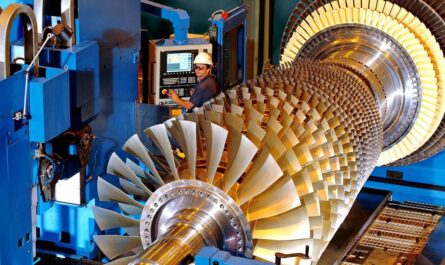What are Captive Power Plants?
Ever increasing energy demand and reliability issues with grid supply has led many large industries to set up their own power generation facilities known as Captive Power Plants. A captive power plant can be defined as a power generation facility set up by an industrial unit to produce electricity primarily for its own use.
Need and Benefits of Captive Power Plant
With growing industrialization and expanding operations, reliable power supply is critical for continuous production. Captive Power Plant is often unpredictable with frequent outages affecting operations. Captive plants help overcome this by ensuring uninterrupted supply. Some key benefits of captive plants include:
Reliable Power Supply
Captive plants guarantee continuous power supply critical for process industries. Industries can avoid production losses due to power outages. This improves plant load factors and productivity.
Lower Power Costs
Captive plants market help reduce dependency on expensive grid power. Industries can self-generate power at lower costs compared to grid tariffs especially when fuel is available at economical rates. Operating a captive plant proves economically viable.
Fuel Flexibility
Captive plants offer flexibility to use multiple fuel sources like coal, gas, diesel etc. based on availability and price. This hedges industries against volatility in fuel market. Industries can optimally utilize local fuel resources to minimize energy costs.
Types of Captive Power Plants
Captive plants are classified based on fuel used and installed capacity. Common types include:
Thermal Captive Plants
Thermal plants use fossil fuels like coal, natural gas, furnace oil to fire boilers that produce steam to run turbines for power generation. Thermal plants account for over 80% of total captive capacity in India.
Diesel Generator Sets
These are lower capacity plants typically below 10 MW employing diesel as fuel. Often used as backups or to meet temporary incremental loads. Easy to install but have higher generation costs.
Gas Turbine Plants
Gas turbines provide flexible, quick start generation ideal for peak loads. Natural gas is the common fuel. Suitable for moderate capacity requirements up to 100 MW.
Co-generation Plants
Also known as combined heat and power (CHP) plants, they generate both electricity and useful thermal energy (like steam or hot water) in one integrated process to improve overall efficiency.
Renewable Energy Plants
Newer captive plants increasingly use solar, wind and biomass as renewable and green energy sources especially for industries with CSR commitments.
Regulations for Captive Power Plants
The Electricity Act 2003 facilitated captive power generation in India. Major regulations include:
– Minimum installed capacity limit of 1 MW for a stand-alone plant or above equivalent of 9% of contracted demand for grid connected plants.
– Plant should be located within the premises of consuming unit or at a locate approved by the State Load Dispatch Centre.
– Captive users must hold at least 26% equity in plant if it is set up by a third party.
– Open access to transmission and distribution system is available to bring power from plant to consuming units.
– Renewable purchase obligations require captive users and open access consumers to meet mandates for renewable energy sourcing.
Trends in Captive Power Generation
Captive generation capacity in India has witnessed exponential growth and currently stands at over 36000 MW contributing 11% of total power generated. Key trends observed are:
Thermal dominance: Thermal plants account for bulk 83% of captive capacity mainly coal and gas. However share of green energy is rising.
Private sector lead: Private sector has taken lead in setting up captive plants with over 70% share compared to public sector.
Regional distribution: States like Gujarat, Maharashtra, Tamil Nadu, Andhra Pradesh lead in captive capacities due to major industrial presence.
Renewables rising: While coal still leads, share of renewables like solar, wind, biomass is increasing in new captive projects in line with environment protection and sustainability goals.
Optimum utilization: With deregulation, many captive plants now also supply surplus power to grid under collective model providing better asset utilization.
In conclusion, Captive Power Plant have emerged as the mainstay for reliable power supply to industries in India. They have gained more relevance with deregulation and open access policy providing viable alternative to expensive grid tariffs.
*Note:
1. Source: Coherent Market Insights, Public sources, Desk research
2. We have leveraged AI tools to mine information and compile it




